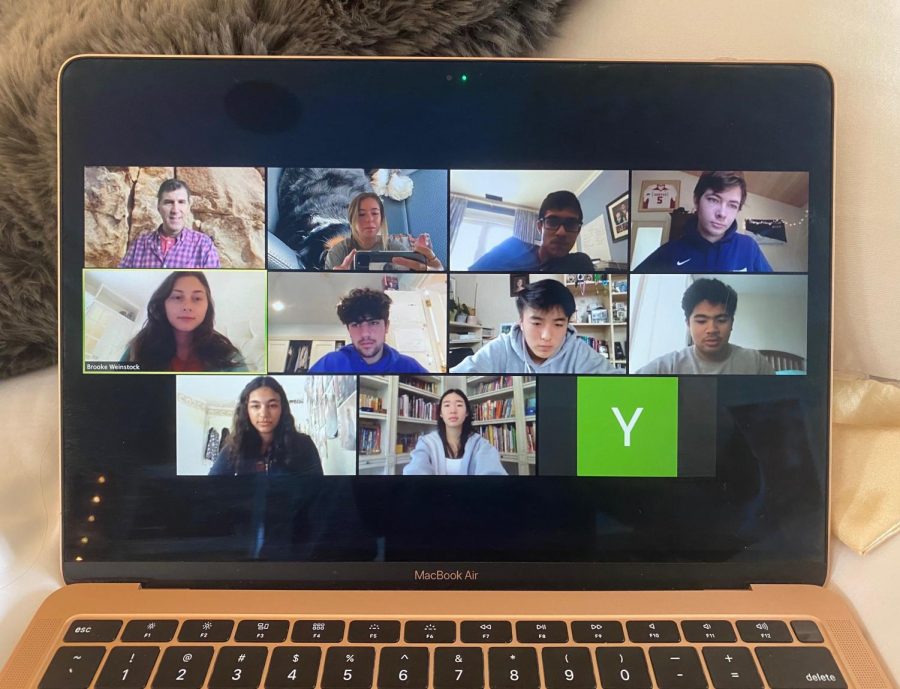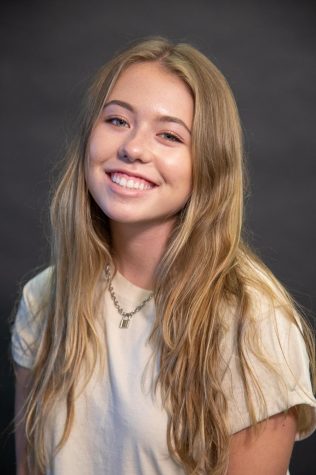Unpacking Menlo’s Tradition of Advocacy
During online classes, advocacies meet twice a week via Google Meet. Staff photo: Lauren Lawson.
April 17, 2020
Advocacy has dated back in Menlo history as one of the standout features in our schedule. Beginning at freshman orientation, small groups of roughly 10 students are assigned a teacher that acts as their mentor for the upcoming four years. Every Friday, this group meets for 45 minutes to discuss topics as deep as sexual harassment in our community to our favorite flavor of goldfish while playing games like Jenga or hangman. Advocates act as more than just teachers; in fact, some even say that they act as parent-figures.
Whether advocacy time is spent getting help from your advocate on math homework (since your advocate doubles as a math teacher!), or diving into discussions about the recent assembly, this 45 minutes is a time that Menlo holds true to their mission-statement thanks to the community it builds within the students.
While it seems like a time to exhale for the students, it also provides that same sense of relief to the advocate as well. “I think I’m much more like my ‘father self,’ […] and that’s made everything more natural for me and probably made me a better advocate,” Upper school Math teacher Randy Joss said. In his advocacy, students sit at one table that resembles a family dinner table. In this way, conversations are heard better and attention is all on the topic at hand.
Additionally, Mr. Joss has his students, and more importantly his advocacy group, call him “Randy” rather than traditional “Mr. Joss.” In his words, “It sort of signals that this is a different thing from your usual class and we all therefore feel different about advo because of [it].”
A group formed to benefit the mental health and well-being of students serves to uplift the kids, but it also gives teaching an even deeper meaning, according to Joss. Having a teacher that reaches out to do one-on-one meetings to talk about life at home, not just grades, forms bonds within the Menlo community that make school even more of a safe-space to a lot of the students.
One of the Juniors in Mr. Joss’ advocacy, Yvonne Li remarks on the benefit of connecting with students that aren’t a part of her usual social group.. “I really enjoy having advocacy as something I can look forward to. I really like having that time to talk to my peers that I don’t normally see or talk to during the week.” Since advocacies are made at random before the initiation of freshman year, the group of students in no way have notable correlation to each other. While this may sound tedious to make a random group to stick together for four years, as time goes on, each student branches into different directions and yet still has this original group to fall back to.
“One of my closest and first friends is in my advocacy and others I don’t have classes with. Even still, they’re still considered my close friends because of all of our history together through the years,” Junior Brooke Weinstock said. Weinstock is also a member of Mr. Joss’ advocacy and said, “I can chat about my week, things going on in school, and the world with people I am comfortable with.” Whether it’s passing someone in the hall, bumping into a peer on the quad or even having the same class on the first day of school, advocacy is a tight-knit group of students that are able to act more as a family than just a class. Advocacy combines unique learners under one roof to form a relationship and collaborate together, whether that be tackling a group game of Tic-Tac-Toe, wrapping and buying presents for an adopt-a-family, or discussing cultural appropriation in our community.



